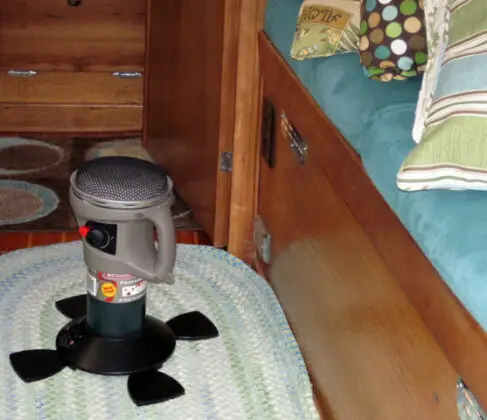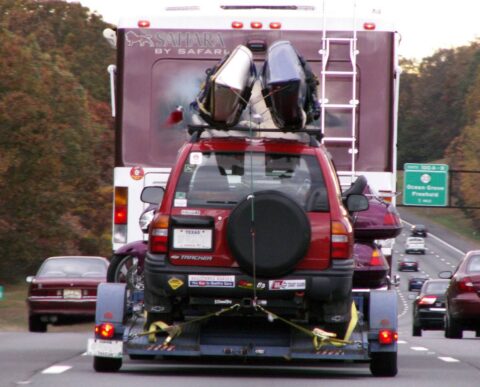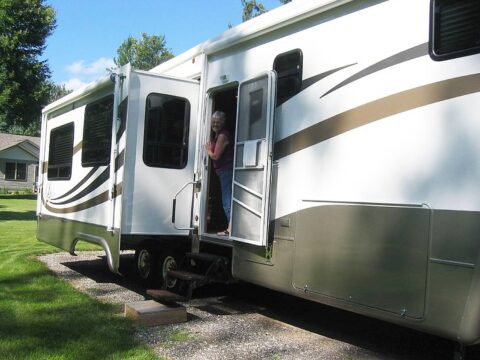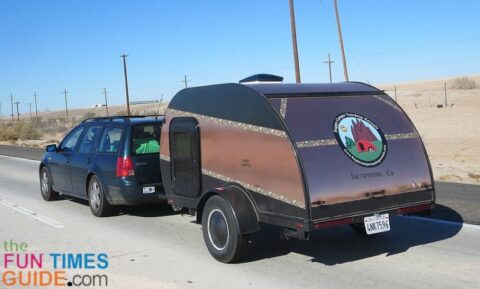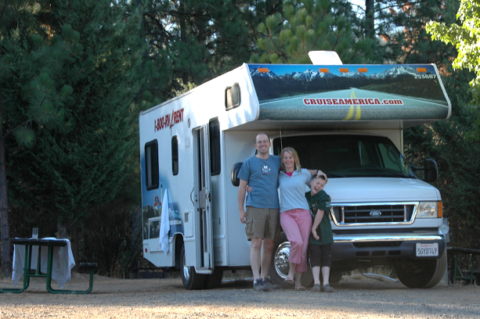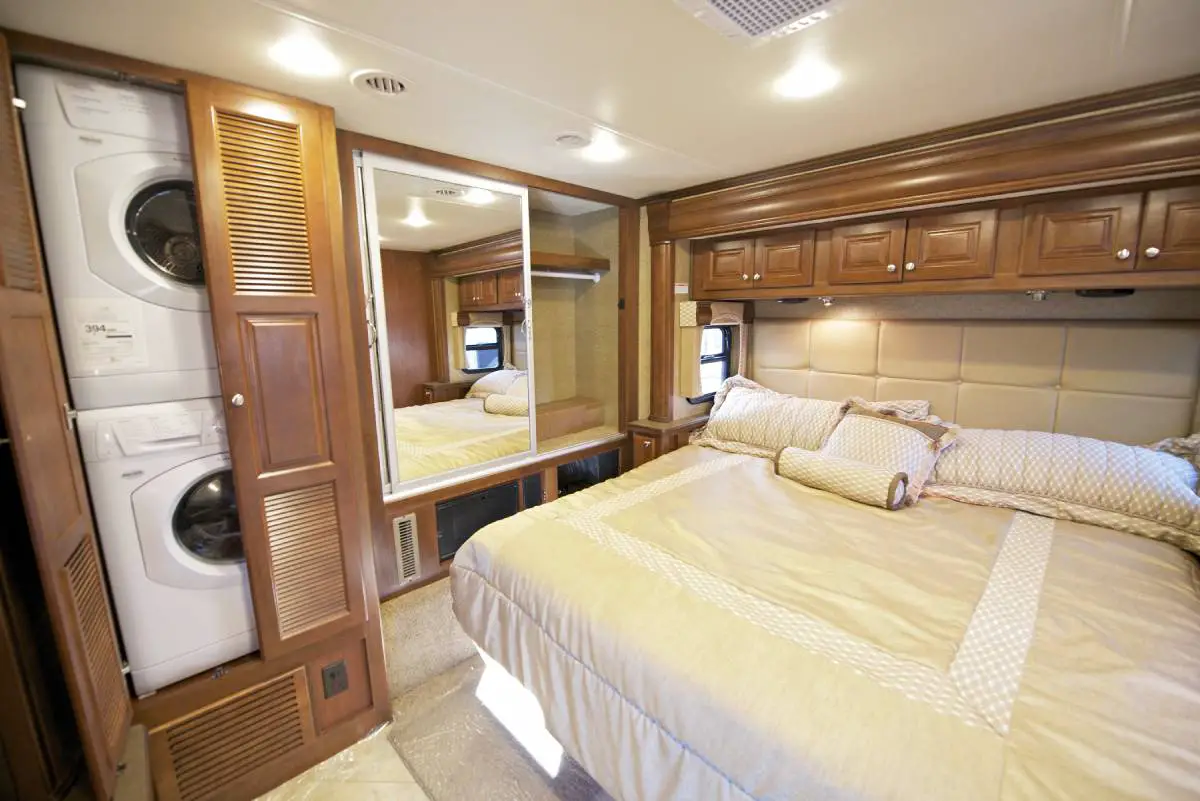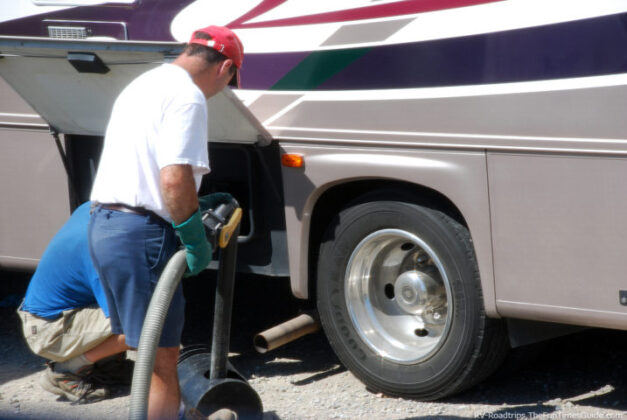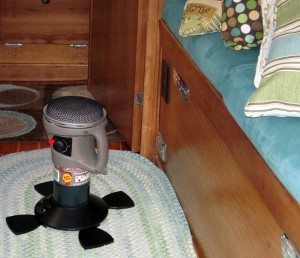 If you travel in your RV during the fall and winter months, then you need to ensure that you will stay warm and comfortable throughout your journey.
If you travel in your RV during the fall and winter months, then you need to ensure that you will stay warm and comfortable throughout your journey.
Are you planning on spending more than one night stationary? If so, do you have adequate battery power to operate your on-board furnace?
If you run your forced-air furnace during the night, the battery drain from that fan will leave you with dead house batteries by day 2 of your excursion.
Running your generator all day to recharge the batteries only addresses the electrical issue.
Forced-air RV furnaces use a lot of propane. If you’re parked 25 miles from civilization, do you want to be driving to town to refill your tanks on a regular basis?
Maybe it’s time to find a different source of heat to keep you warm inside your RV.
Have you considered a catalytic heater?…
Why Catalytic Heaters Are So Great
Catalytic heaters require no electricity to operate.
This eliminates the largest drain on your RV’s electrical capacity allowing you to save your precious volts for such things as the TV and computer.
Since there is no open flame (just a heat-producing catalytic reaction instead), catalytic heaters consume propane at a much slower rate. This will greatly reduce the number of trips back to town for more propane.
Catalytic heaters differ from infrared radiant heaters in that heat is generated from a flameless catalytic reaction involving propane and oxygen. Source
Misconceptions About Catalytic Heaters
You may have read the occasional news story about a tragic death caused by the use of a catalytic heater in a confined space.
What you may not be aware of is the fact that the cause of death is most often not due to carbon monoxide poisoning. Since there is no open flame, the catalytic reaction burns much cleaner, greatly reducing noxious fumes or deadly gasses.
Here’s an overview of the amount of toxic byproducts introduced into the RV by a properly functioning appliance:
- Vented heaters – none
- Catalytic heaters- some
- Open Flame heaters – more
These tragic deaths are usually credited to a lack of oxygen in a confined space.
Catalytic heaters consume oxygen. If they are used in a small space that’s completely sealed up from the outdoor elements, the occupants inside can asphyxiate due to lack of oxygen.
The lesson here: Always provide for additional oxygen to enter the space inside your RV whenever you’re using a catalytic heater.
Fortunately, today many catalytic heaters are manufactured with low oxygen sensors — so when the oxygen level drops below a certain level, the flow of propane is shut off and the heater extinguishes itself. Make sure that your catalytic heater has this low oxygen sensor, since not all catalytic heaters are equipped with this form of protection.
The Best Catalytic Heaters For RVs
If you choose to make use of the energy-conserving catalytic heater, there are 2 styles available that are commonly used in RVs:
- A portable space heater can be operated using a throw-away propane canister. Or, by using an extension hose, you can run it off a standard portable refillable propane tank. Mr. Heater Buddy portable heaters are a popular brand. They are small and convenient to use inside an RV. (See video)
- A permanently mounted catalytic heater is plumbed directly into your onboard propane system. Olympian heaters are a popular brand that comes in 3 sizes. You can select the unit that offers the best performance for the square footage that matches your RV. (See video)
I have used the portable Buddy Heater while fulltime RVing through some very cold north Texas winters. (Yes, they do get snow and below-zero temperatures, even in Texas!)
Catalytic Heater Safety Tips
This type of space heater can be used safely, as long as you observe all the safety precautions.
If you decide to use a catalytic heater inside your RV, follow these tips very closely:
- Only use a catalytic heater that is specifically designed for indoor use.
- Use only catalytic heaters that have low oxygen shut down protection.
- If your catalytic heater is a portable model, make sure that it has tip over protection, so it will shut down any time it’s not in an upright position.
- Follow the manufacturer’s instructions exactly as they are stated every time you use the catalytic heater.
- Ensure that there is adequate ventilation before you turn on the catalytic heater.
- If you are using an extended hose and bulk tank, the tank must remain outdoors at all times.
- Have a good, working carbon monoxide detector and propane detector on board.
- When not in use, keep your catalytic heater covered from dust at all times; otherwise it will produce higher amounts of carbon monoxide.
There is no room for carelessness on this subject.
Taking shortcuts when using a catalytic heater can quickly lead to disaster.
A must-read: RV Alarm & Safety Equipment That You Must Have Onboard Your RV At All Times!
I’ve been involved in RVing for over 50 years — including camping, building, repairing, and even selling RVs and motorhomes. I’ve owned, used, and repaired almost every class and style of RV ever made. I do all of my own repair work. My other interests include cooking, living with an aging dog, and dealing with diabetic issues. If you can combine a grease monkey with a computer geek, throw in a touch of information nut and organization freak, combined with a little bit of storyteller… you’ve got a good idea of who I am. To date, I’ve shared my RV knowledge in over 300 articles here at The Fun Times Guide! Many of them have over 25K shares.
